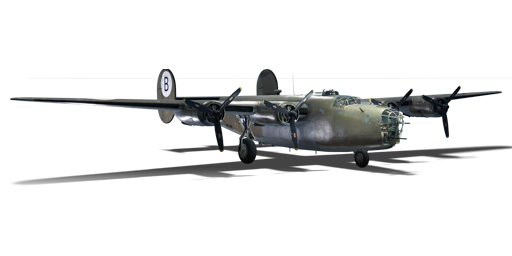



In 1938, the US Army Air Corps issued a proposal for the Consolidated Aircraft Company to produce the Boeing B-17 Flying Fortress under licence. However, Consolidated counter-proposed a bomber design that would be, in theory, superior in performance compared to the B-17. As such, in 1939, the USAAC accepted a design proposal for what would later be known as the Consolidated B-24 Liberator. The B-24's key design feature was the "Davis wing", a thick, shoulder-mounted wing design that gave the plane a significant boost in terms of speed and fuel efficiency. This, along with the B-24's ability to carry a larger payload at longer ranges, led the USAAC to accept the B-24 for production that year, with the first aircraft delivered in mid-1941.
While those in USAAF Command considered the B-24 to be superior to the B-17 due to its efficiency, this opinion was often not shared by those who operated the aircraft itself. Being designed with efficiency and speed as priorities, the B-24 was very difficult to fly and manoeuvre due to its high-wing configuration, while the durability of the aircraft was rather poor, especially the "Davis wing" that had a tendency to snap clean off the aircraft when damaged. Nevertheless, due to its tactical usefulness, 18,188 B-24s were produced, making it the most produced bomber in history. In fact, the B-24 was produced in such quantities that the USAAF ended up scrapping most of them as soon as the war finished after the B-29 rendered all other heavy bombers in their fleet obsolete.
In the game since the start of the Open Beta Test prior to Update 1.27, the B-24D-25-CO Liberator was designed with efficiency as a priority, and as such it concedes various qualities to achieve this. Compared to its predecessor, the B-17, the B-24 flies faster in a straight line and climbs better, while being capable of carrying the same amount of payload without the need for external modifications. However, other than its speed, the B-24 is best described as a flying brick in terms of manoeuvrability, being incapable of making quick turns like the B-17, while also being significantly vulnerable to damage. As such, it is imperative for the pilot to look out for enemy fighters, as they can pose a significant danger to the aircraft.
flaps
flaps
flaps
brake
| Belt | Belt filling | Armor penetration (mm) at a distance: | |||||
|---|---|---|---|---|---|---|---|
| 10 m | 100 m | 500 m | 1000 m | 1500 m | 2000 m | ||
| T/AP/I/AP-I | 30 | 27 | 20 | 13 | 9 | 6 | |
| AP/AP/AP/T | 30 | 27 | 20 | 13 | 9 | 6 | |
| AP-I/AP-I/AP-I/T | 28 | 26 | 18 | 11 | 7 | 4 | |
| Belt | Belt filling | Armor penetration (mm) at a distance: | |||||
|---|---|---|---|---|---|---|---|
| 10 m | 100 m | 500 m | 1000 m | 1500 m | 2000 m | ||
| T/AP/I/AP-I | 30 | 27 | 20 | 13 | 9 | 6 | |
| AP/AP/AP/T | 30 | 27 | 20 | 13 | 9 | 6 | |
| AP-I/AP-I/AP-I/T | 28 | 26 | 18 | 11 | 7 | 4 | |












Flight performance | |
|---|---|
Survivability |
|---|
Weaponry | |
|---|---|